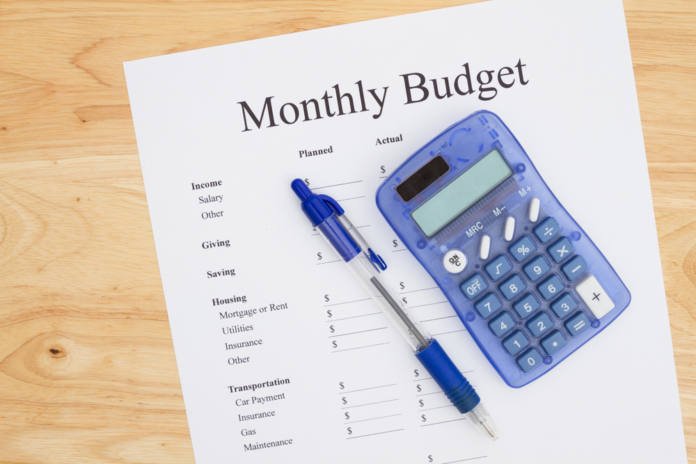Creating a monthly budget may sound intimidating at first, but it’s one of the most important steps you can take to take control of your money. Whether you’re a student, a young professional, or someone who just wants to stop feeling stressed about finances, a budget helps you know exactly where your money is going. The good news is that budgeting is not about restricting yourself—it’s about giving every dollar a purpose so you can save, spend wisely, and still enjoy life.
In this guide, we’ll break down how beginners can create a monthly budget step by step, using simple language and practical examples. By the end, you’ll feel more confident about managing your money, reaching financial goals, and avoiding unnecessary debt.
Why a Monthly Budget Matters
Many people live paycheck to paycheck simply because they don’t track where their money goes. Without a budget, it’s easy to overspend on eating out, shopping, or streaming subscriptions.
A monthly budget helps you:
- See how much money you earn and spend.
- Prioritize essentials like rent, food, and bills.
- Avoid running out of money before payday.
- Build savings for emergencies and future goals.
- Reduce financial stress by being in control.
Think of a budget as a financial GPS—it shows you where you are and guides you toward where you want to go.
Step 1: Understand Your Income
The first step to creating a budget is knowing exactly how much money comes in each month. Write down your income sources, such as:
- Salary or wages (after taxes).
- Side hustles or freelance work.
- Bonuses, commissions, or tips.
- Any other regular income.
For example, if you earn $2,500 from your job and $200 from freelance work, your total monthly income is $2,700. Always use your net income (the money you actually receive after taxes and deductions), not your gross income.
Step 2: Track Your Expenses
Before setting a budget, you need to know where your money goes. Spend a month tracking every expense, no matter how small. This includes:
- Fixed expenses: Rent, utilities, insurance, car payments.
- Variable expenses: Groceries, gas, dining out, entertainment.
- Occasional expenses: Gifts, repairs, medical bills.
You can use apps, spreadsheets, or even a notebook to track spending.
Example:
- Rent: $900
- Groceries: $300
- Utilities: $150
- Transportation: $120
- Entertainment: $100
- Subscriptions: $50
- Miscellaneous: $80
Total expenses = $1,700
If your income is $2,700, you still have $1,000 left to allocate toward savings or debt payments.
Step 3: Set Financial Goals
A budget works best when it’s tied to your goals. Ask yourself:
- Do I want to build an emergency fund?
- Am I saving for a trip or buying a car?
- Do I need to pay off debt faster?
For beginners, focus on three main goals:
- Building an emergency fund (3–6 months of expenses).
- Paying down high-interest debt like credit cards.
- Saving for short-term and long-term needs.
Step 4: Choose a Budgeting Method
There are several budgeting methods beginners can use. The key is picking one that feels comfortable and easy to follow.
The 50/30/20 Rule
- 50% of income → Needs (rent, food, bills).
- 30% → Wants (entertainment, shopping).
- 20% → Savings and debt repayment.
Example (income = $2,700):
- Needs = $1,350
- Wants = $810
- Savings/Debt = $540
The Envelope System
You put cash into separate envelopes for different categories (groceries, gas, entertainment). Once the envelope is empty, you stop spending in that category.
Zero-Based Budgeting
Every dollar you earn is assigned a job (spending, saving, or investing). At the end of the month, your income minus expenses should equal zero.
Step 5: Create Your Budget
Now, put it all together:
| Category | Amount | Example Allocation (Income $2,700) |
|---|---|---|
| Housing (Rent/Mortgage) | $900 | Fixed expense |
| Utilities & Bills | $150 | Electricity, water, internet |
| Groceries | $300 | Weekly shopping |
| Transportation | $120 | Gas, bus fare |
| Insurance | $150 | Health/car insurance |
| Debt Payments | $200 | Credit card, student loan |
| Savings & Emergency | $400 | Emergency fund or future goals |
| Entertainment & Dining | $150 | Eating out, movies |
| Miscellaneous | $100 | Unexpected costs |
Total: $2,470
This leaves $230, which you can use for extra savings, debt repayment, or personal spending.
Step 6: Stick to Your Budget
Creating a budget is easy—the challenge is sticking to it. Here’s how to stay on track:
- Review your budget weekly to see if you’re overspending.
- Use budgeting apps to track automatically.
- Cut unnecessary expenses like unused subscriptions.
- Reward yourself for hitting savings milestones.
Remember, budgets are flexible. If your expenses change, adjust the numbers instead of giving up.
Step 7: Review and Improve Monthly
At the end of each month, check:
- Did you stick to your budget?
- Where did you overspend?
- Can you save more next month?
Budgeting is a skill—it gets easier the more you practice.
Common Beginner Mistakes to Avoid
- Being too strict – Don’t cut out all fun; leave room for enjoyment.
- Ignoring small expenses – Daily coffee or snacks add up.
- Not saving for emergencies – One unexpected bill can ruin your budget.
- Forgetting annual costs – Plan for holidays, birthdays, or car registration.
- Comparing to others – Your budget should reflect your lifestyle, not someone else’s.
Final Thoughts
Learning how to create a monthly budget for beginners is one of the smartest financial decisions you can make. By tracking your income, expenses, and goals, you gain control over your money instead of letting it control you.
Start small, stay consistent, and adjust as you learn more about your spending habits. With time, budgeting will feel natural, and you’ll be well on your way to financial stability and freedom.
FAQs About Creating a Monthly Budget
1. How much should I save each month as a beginner?
Aim to save at least 10–20% of your income. Even if it’s just $50–$100 per month, consistency is more important than the amount.
2. What if I don’t earn much money—can I still budget?
Yes. A budget is even more important if your income is small. It helps you prioritize essentials and cut unnecessary expenses.
3. How can I make budgeting easier?
Use free budgeting apps, set reminders, and automate savings so you don’t have to think about it constantly.
4. Should I pay off debt or save first?
Ideally, build a small emergency fund first (about $500–$1,000). Then, focus on paying down high-interest debt while still saving a little each month.
5. How long does it take to see results from budgeting?
Most people notice improvements in 1–3 months. The longer you stick with it, the more control and savings you’ll build.

